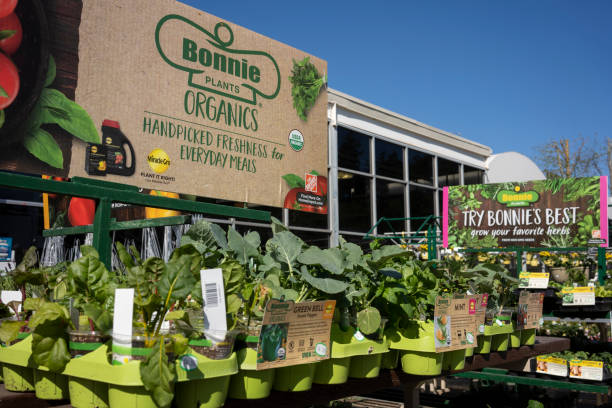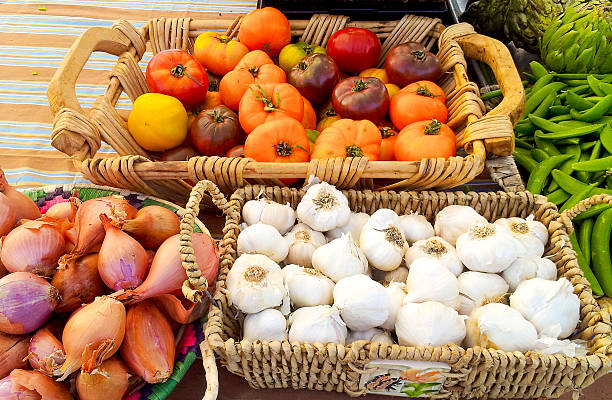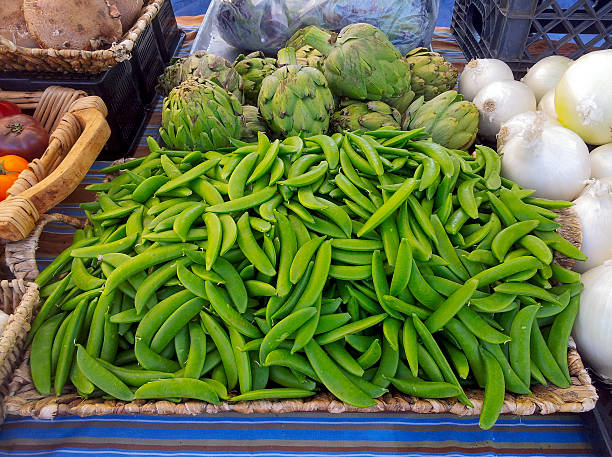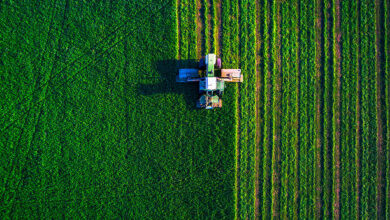United States Department of Agriculture Supporting Farmers and Ensuring the Nation’s Food Safety
DEPARTMENT OF AGRICULTURE
The United States Department of Agriculture (USDA) is a federal agency that plays an important role in supporting farmers, promoting agricultural trade, and ensuring the nation’s food safety. Through a variety of programs, the USDA works to support farmers through research, crop insurance, and other initiatives. Additionally, the agency is responsible for ensuring the safety of food products sold in the United States, with strict regulations and inspections of products. With its focus on ensuring the nation’s food safety, supporting farmers, and promoting agricultural trade, the USDA is an important agency that supports the United States’ economy.

The History and Role of USDA
The United States Department of Agriculture (USDA) has a rich and impactful history that has shaped its role as a critical agency in supporting farmers and ensuring the safety of the nation’s food supply. Established in 1862 by President Abraham Lincoln, the USDA has evolved over time to address the changing needs of the agriculture industry and the American people.
Originally founded as the “People’s Department,” the USDA was tasked with providing valuable information and resources to farmers, helping them improve their practices and productivity. It was also responsible for conducting agricultural research, promoting rural development, and ensuring the integrity of agricultural markets. These early efforts laid the foundation for the USDA’s continued commitment to supporting farmers and advancing agricultural practices.
Over the years, the USDA has played a pivotal role in shaping agricultural policy and responding to the needs of farmers. It has implemented programs and initiatives to provide financial assistance to farmers during times of economic hardship, promote sustainable farming practices, and foster agricultural innovation. From crop insurance programs to funding for research and development, the USDA has been instrumental in empowering farmers to thrive and adapt in an ever-changing agricultural landscape.

In addition to supporting farmers, the USDA has also been entrusted with the critical task of ensuring the safety and security of the nation’s food supply. Through rigorous inspections, monitoring, and regulation, the agency works diligently to protect consumers from foodborne illnesses and contamination. Its commitment to food safety is exemplified by the implementation of the Food Safety and Inspection Service (FSIS) and the establishment of rigorous standards and protocols for food production and processing.
Today, the USDA continues to play a vital role in supporting farmers, promoting agricultural trade, and safeguarding the nation’s food supply. It remains committed to innovation and adaptation, seeking new ways to address the challenges and opportunities facing the agriculture industry. With its diverse range of programs and initiatives, the USDA remains an essential agency that supports the United States’ economy, ensuring the well-being of farmers and the safety of consumers.
Programs for Farmers and Ranchers
The USDA recognizes the critical role that farmers and ranchers play in our nation’s economy and food production. To support these hardworking individuals, the USDA offers a range of programs and initiatives that provide financial assistance, resources, and technical expertise. These programs aim to empower farmers and ranchers to thrive, adapt, and succeed in a rapidly evolving agricultural landscape.
One of the primary programs offered by the USDA is the Farm Service Agency (FSA), which provides financial assistance to farmers through various loan programs. These loans can be used for operating expenses, purchasing equipment, or expanding operations. The FSA also offers disaster assistance programs, providing financial support to farmers who have suffered losses due to natural disasters or other unforeseen circumstances.
Another crucial program for farmers and ranchers is the Natural Resources Conservation Service (NRCS). The NRCS works with farmers to implement conservation practices that improve soil health, protect water quality, and enhance wildlife habitat. Through initiatives like the Conservation Stewardship Program and the Environmental Quality Incentives Program, the NRCS provides technical assistance and financial incentives to encourage sustainable farming practices.

The USDA also supports farmers and ranchers through research and innovation programs. The Agricultural Research Service (ARS) conducts cutting-edge research to develop new technologies, improve crop yields, and address emerging agricultural challenges. The National Institute of Food and Agriculture (NIFA) provides grants and funding for research projects, education, and extension activities that benefit farmers and ranchers.
In addition to these programs, the USDA offers educational resources, market access programs, and risk management tools to help farmers and ranchers succeed. The agency works closely with industry organizations and stakeholders to promote agricultural trade and expand market opportunities for American farmers. The USDA’s Risk Management Agency provides crop insurance programs that help farmers mitigate financial risks and ensure a stable income.
Overall, the USDA’s programs for farmers and ranchers are designed to provide support, resources, and assistance that enable them to thrive and succeed. Through these initiatives, the USDA is committed to helping farmers and ranchers navigate the challenges of modern agriculture, promote sustainability, and ensure a reliable and abundant food supply for all Americans.
Ensuring the Safety and Security of Our Food Supply
The United States Department of Agriculture (USDA) takes its responsibility of ensuring the safety and security of our food supply very seriously. With a dedicated focus on food safety, the USDA has implemented rigorous regulations, inspections, and monitoring to protect consumers from foodborne illnesses and contamination.
One of the key initiatives that the USDA has put in place to ensure food safety is the Food Safety and Inspection Service (FSIS). This agency is responsible for inspecting meat, poultry, and egg products to ensure that they are safe and properly labeled. The FSIS conducts thorough inspections at every step of the production process, from farms and processing facilities to grocery stores and restaurants. By setting and enforcing strict standards and protocols, the FSIS helps to prevent the spread of foodborne illnesses and maintains the highest levels of food safety.
In addition to inspections, the USDA also implements proactive measures to prevent contamination and respond quickly to potential food safety issues. The agency conducts research and collaborates with industry partners to develop and promote best practices in food production and processing. It also works closely with other federal agencies, state governments, and international partners to share information and coordinate efforts to protect the food supply.

Furthermore, the USDA has implemented the Recall Management Division to manage recalls of food products that may be unsafe for consumption. This division ensures that recalls are efficiently executed, and that the public is properly informed about any potential risks.
Through these comprehensive efforts, the USDA plays a crucial role in safeguarding the nation’s food supply and protecting consumers. The agency’s commitment to food safety is unwavering, and it continues to explore innovative solutions to address emerging challenges in food safety.
Supporting Nutrition and Food Access for All Americans
The United States Department of Agriculture (USDA) is not only dedicated to supporting farmers and ensuring the safety of the nation’s food supply but also to promoting nutrition and food access for all Americans. The USDA recognizes that access to nutritious food is essential for the health and well-being of individuals and communities.
To achieve this goal, the USDA has implemented various programs and initiatives that focus on increasing access to healthy food options, especially for underserved populations. One of the primary programs in this effort is the Supplemental Nutrition Assistance Program (SNAP), formerly known as food stamps. SNAP provides low-income individuals and families with funds to purchase food, enabling them to have access to a nutritious diet. The USDA also supports programs like the Women, Infants, and Children (WIC) program, which provides supplemental food, nutrition education, and healthcare referrals to low-income pregnant women, new mothers, and young children.
Additionally, the USDA works to ensure that healthy food options are available in schools through programs such as the National School Lunch Program and the School Breakfast Program. These programs provide free or reduced-price meals to students, helping to address food insecurity and ensure that children have access to nutritious meals during the school day.
Furthermore, the USDA supports community initiatives that aim to improve food access, such as the Farmers Market Promotion Program and the Local Food Promotion Program. These programs provide funding and resources to local farmers and organizations to promote the availability of fresh and locally grown produce in communities across the country. By supporting local agriculture and expanding access to fresh fruits and vegetables, the USDA is not only improving nutrition but also boosting local economies.

Innovations and Future Directions for USDA
As the United States Department of Agriculture (USDA) looks towards the future, it continues to prioritize innovation and adaptability in order to address the evolving needs of farmers, consumers, and the agricultural industry as a whole. With an unwavering commitment to supporting farmers and ensuring the safety of the nation’s food supply, the USDA is exploring new technologies and approaches that will shape the future of agriculture.
One of the key areas of focus for the USDA is the use of technology and data in agriculture. Through the implementation of precision agriculture techniques, such as remote sensing, drones, and satellite imagery, the USDA is able to gather valuable data on crop health, soil conditions, and weather patterns. This data allows farmers to make more informed decisions, optimize resource use, and improve productivity. By embracing cutting-edge technologies, the USDA is empowering farmers to be more efficient and sustainable in their practices.
Additionally, the USDA is committed to promoting agricultural research and development. By investing in scientific advancements and innovation, the agency aims to address emerging challenges such as climate change, pests, and diseases. Through initiatives like the Agriculture and Food Research Initiative (AFRI), the USDA provides funding and support to researchers and scientists working on projects that enhance agricultural productivity, improve food safety, and promote sustainable farming practices. By fostering collaboration and innovation, the USDA is paving the way for a more resilient and efficient agricultural sector.
Another area of focus for the USDA is increasing the accessibility of nutritious food options for all Americans. The agency is exploring innovative approaches to reduce food waste, improve food distribution systems, and increase access to fresh and healthy foods in underserved communities. By partnering with local organizations, schools, and farmers, the USDA is working to create a more equitable and sustainable food system.
In conclusion, the USDA is at the forefront of innovation and future-focused initiatives that will shape the future of agriculture in the United States. Through the use of technology, investment in research and development, and a commitment to food access and nutrition, the USDA is driving positive change and ensuring the long-term sustainability and security of the nation’s food supply. By embracing new ideas and approaches, the USDA is leading the way in supporting farmers, protecting consumers, and advancing the agricultural industry.






I am thankful that I discovered this weblog, precisely the right information that I was searching for! .
I’m truly enjoying the design and layout of your website. It’s a very easy on the eyes which makes it much more pleasant for me to come here and visit more often. Did you hire out a designer to create your theme? Great work!
It’s really a great and helpful piece of information. I’m satisfied that you simply shared this useful info with us. Please keep us up to date like this. Thanks for sharing.
Magnificent site. Plenty of helpful information here. I’m sending it to a few pals ans additionally sharing in delicious. And of course, thank you for your sweat!
When I originally commented I clicked the “Notify me when new comments are added” checkbox and now each time a comment is added I get four e-mails with the same comment. Is there any way you can remove me from that service? Thanks!
Lovely just what I was looking for.Thanks to the author for taking his clock time on this one.
What is ProDentim? ProDentim is an innovative oral care supplement with a unique blend of ingredients designed to promote better oral and dental health
What Is Sumatra Slim Belly Tonic? Sumatra Slim Belly Tonic is a weight management formula that is said to eliminate excess body fat naturally.
Good write-up, I am regular visitor of one¦s web site, maintain up the nice operate, and It is going to be a regular visitor for a lengthy time.
I do not even know the way I stopped up here, however I believed this publish was once good. I don’t know who you are but certainly you are going to a well-known blogger for those who are not already 😉 Cheers!
Very interesting subject, thank you for putting up.
It¦s actually a cool and useful piece of information. I¦m satisfied that you simply shared this useful info with us. Please keep us up to date like this. Thank you for sharing.